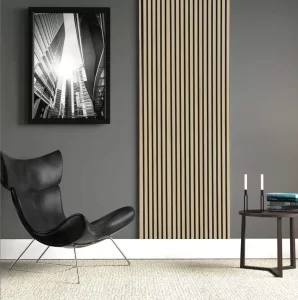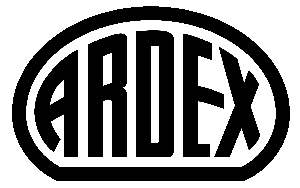No products in the cart.
All Products, Exterior / Outdoor Use Self Levelling Compound and Paving Grouts
Need a bespoke deal or spotted a pallet deal cheaper than ours? We can usually beat it! 0333 344 2655 or info@buythepallet.co.uk
BAL Bedding Mortar (External) 25Kg – Pallet Deals & Bulk Buy – Pre-blended cement and graded fillers to provide a mortar bed
BAL External Bedding Mortar is
Pre-blended cement with graded fillers to provide a mortar bed
BAL Bedding Mortar is a special cement with graded fillers for producing a high performance mortar bed for external use, allowing external pavers and tiles to be fixed to the requirements of BS 7533-4. Bed depth can be achieved from 10mm up to 100mm thickness (minimum 25mm on MOT Type 1).
Pre-blended – just add water, BAL Bedding Mortar is easy to mix and lay up to 100mm in a single application. With more than 1hr working time and walkable in 12 hours it provides the perfect bedding system for 20mm porcelain, stone and pavers. It is also freeze-thaw resistant – protecting external installations against damage. Suitable on both bonded and unbonded backgrounds including concrete and Type 1 MOT.
- External Dry or Wet Applications
- Laying a mortar bed before fixing external pavers and
tiles - Bed depth from 10mm (Min 25mm on MOT Type 1) up
to 100mm thickness - Domestic or commercial use
- Can be tiled after 12 hours
- Unit size: 25Kg
- Colour: Grey
Need a bespoke deal or spotted a pallet deal cheaper than ours? We can usually beat it! 0333 344 2655 or info@buythepallet.co.uk
~ FREE FAST 24-48HRS DELIVERY on BAL, MAPEI, ARDEX, KERAKOLL: If ordered before 12pm ~
BAL External Bedding Mortar further information
Type/Classification: Conforms to requirements of BS 7533-4 NOTE: For the latest technical or safety information on this product, refer to the latest product TDS and MSDS.
Key features:
– Can be laid from 10mm-100mm – > 1hr working time at 20°C
– Walkable in 12 hours
– Freeze/thaw resistant
– Just mix with water
Pave after: Paving should begin immediately
BAL External Bedding Mortar technical data:
Usage & Service Conditions
| Walls | X | Floor | Yes |
| Interior | X | Exterior | Yes |
| Dry | Yes | Wet | Yes |
| Swimming Pools* | X | Limited Movement / Vibration | Yes |
*Can be used on areas outside of Swimming pools i.e., surrounds.
PREPARATION
General
Substrates to receive BAL BEDDING MORTAR should be of a suitable Type 1 MOT grade laid to the correct depth and be fully compacted. The sub-base should be stable and not liable to settlement. The application thicknesses detailed above relate to rigid, stable substrates.
All external pavers and tiles should be free of standing or pooling water. This is usually achieved by sloping the external pavers and tiles in one direction to guide the surface water towards a suitable disposal point, i.e., a gully, linear drain, or the edge of the terrace or patio, but wherever possible, surface water is directed away from any buildings. All external pavers and tiles require a stable base.
MIXING
25kg BAL BEDDING MORTAR should be mixed with 2 litres of water to provide a semi-dry consistency.
When a sample of mixed mortar is squeezed in the hand, the sample should retain its shape and not crumble, the gloved hand being left slightly moist.
When a sample is compacted on the base, no film of water should form on the surface.
Mixing should be carried out using a pan, trough or other forced action type mixer. please note: Normal ‘free-‘fall’ mixers are not suitable for mixing semi-dry screed mortars. Use clean equipment and do not use other cement, lime or screed additives etc., in the mix.
PREPARATION
For an unbonded mortar bed laid on a Type 1 MOT sub-base or as a semi-dry bonded screed onto a mature concrete base in an external environment, it is good practice to ensure that adequate falls have been introduced into the sub-grade or concrete. This is to allow water to drain away on the paving, thus avoiding any ponding. Where the patio is adjacent to the house, particular attention should be paid to drainage, and the patio’s height must be significantly below that of any damp proof courses. It is important to note that the supporting sub-base is stable and not liable to settlement. Note: When applying to concrete substrates and Type 1 MOT sub-bases, the concrete substrate or Type 1 MOT sub-base should be primed with 2-3mm of BAL PRIMING SLURRY BOND with the mortar applied to the wet slurry. Further advice may be found in the relevant British Standard.
The working time of the mixed mortar is in excess of 1hr at 20°C. The amount of mortar mixed and the area to be screeded should be limited so that trowelling off, finishing and tile fixing can be completed within the working time. Where a new bay is laid against a set and hardened mortar bed, it is recommended that such daywork joints are vertical and treated with the BAL PRIMING SLURRY BOND, with the BAL BEDDING MORTAR applied onto the wet slurry.
| Product Size | Usage | Approx., clean cold water required per size |
|---|---|---|
| 25Kg | Floors | 2 litres |
| Bed Thickness | Pot Life | Setting Time |
|---|---|---|
| 10mm - 100mm | > 1hr | 12 hours at 20oC |
TEMPERATURE RESISTANCE **
-30oC to 100oC
(** once cured)
THICKNESS
On concrete substrates, BAL BEDDING MORTAR should be applied as required between min. 10mm to max. 100mm thicknesses.
On Type 1 MOT sub-bases, BAL BEDDING MORTAR should be applied as required between min. 25mm to max. 100mm thicknesses. Substrates to receive BAL BEDDING MORTAR should be of a suitable Type 1 MOT grade laid to the correct depth and be fully compacted.
The sub-base should be stable and not liable to settlement. The application thicknesses detailed above relate to rigid, stable substrates.
INSTALLATION: FIXING PAVERS/TILES
To fix an external paver or tile, when the mortar is still wet (<1hr at 20°C), apply BAL PRIMING SLURRY BOND to the mortar using a brush, roller or trowel. Also, apply BAL PRIMING SLURRY BOND to the back of the porcelain tile to give 100% coverage and a total slurry depth of 2-3mm before bedding the porcelain tile into the wet mortar. Adjust the position of the porcelain as required and tap in using a rubber mallet. Apply BAL BEDDING MORTAR at temperatures of a minimum of 5°C and rising.
BAL EXTERNAL BEDDING MORTAR SHELF LIFE
12 months under normal dry conditions. Protect from frost and damp.
View other products by BAL here.| Units | 25Kg bags |
|---|---|
| Brands | |
| Colour | Grey |
Based on 0 reviews
Be the first to review “BAL Bedding Mortar (External) 25Kg – Pallet Deals & Bulk Buy – Pre-blended cement and graded fillers to provide a mortar bed”
You must be logged in to post a review.
Testimonials - What People Say About Us
Buy The Pallet - Tile Adhesive and Floor Levellers Discount Store
Out of 5 stars























There are no reviews yet.